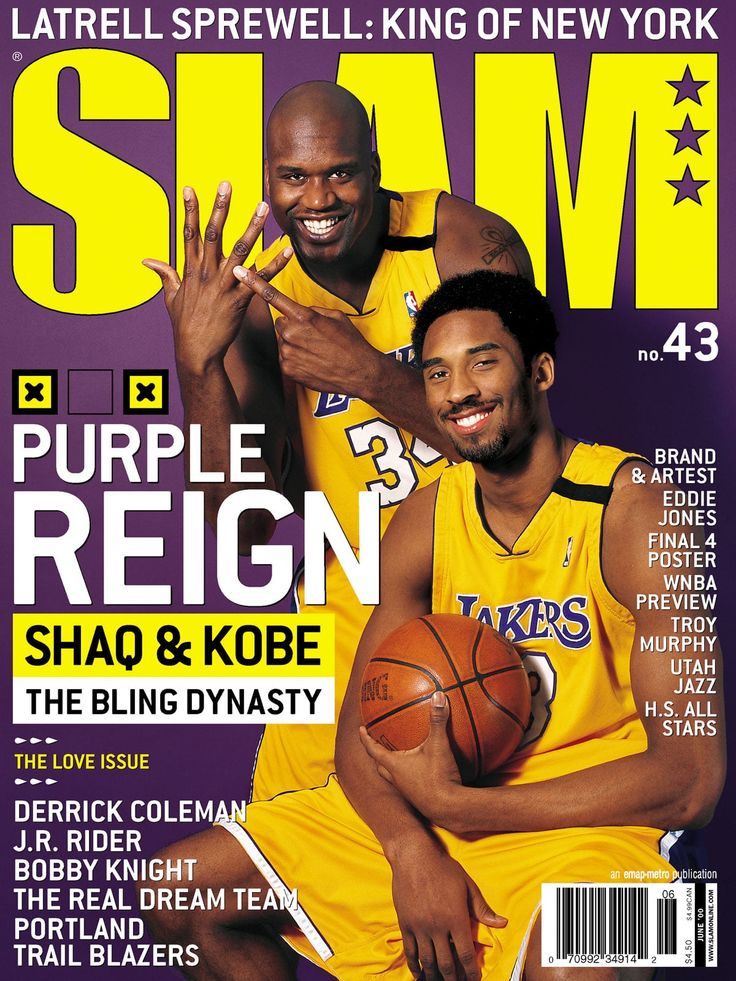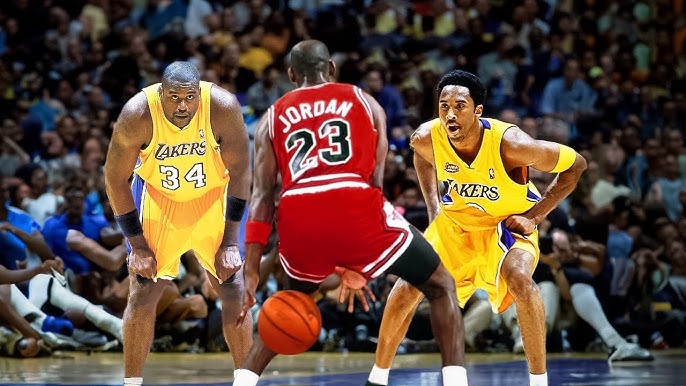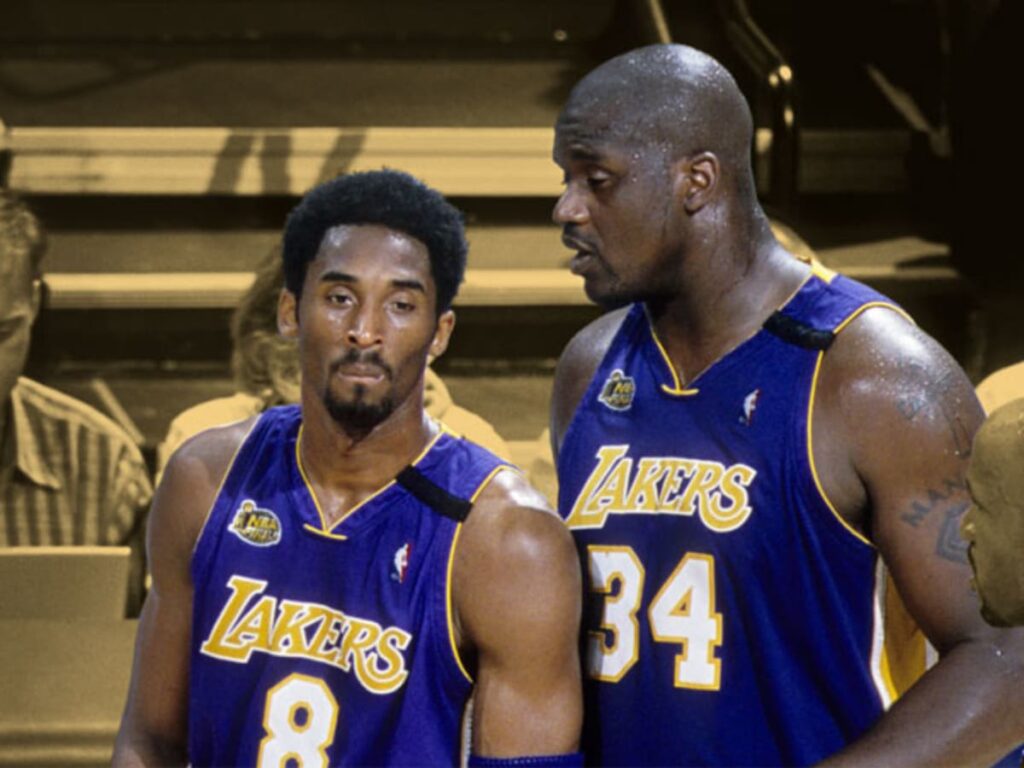
The turn of the millennium witnessed one of the most captivating and contradictory dynasties in NBA history, as the Los Angeles Lakers achieved an unprecedented three-peat from 2000 to 2002, powered by the unstoppable force of Shaquille O’Neal and the emerging brilliance of Kobe Bryant. This extraordinary period represents the pinnacle of basketball excellence, where two generational talents formed an unlikely partnership that would simultaneously create magic on the court while brewing tension behind the scenes that would ultimately tear apart one of the most dominant teams ever assembled.
When Shaquille O’Neal arrived in Los Angeles in 1996 as a free agent, bringing with him the promise of championship glory and a larger-than-life personality that perfectly matched the glitz and glamour of Hollywood, few could have predicted the complex relationship that would develop with a teenage phenom named Kobe Bryant. The pairing of the 7-foot-1, 325-pound center who could dominate the paint like no player before him with the 18-year-old shooting guard who possessed an insatiable hunger for greatness and an uncompromising work ethic created a dynamic that was both revolutionary and volatile, setting the stage for unprecedented success and inevitable conflict.

The first championship in 2000 marked the beginning of an era where the Lakers would establish themselves as the most formidable force in professional basketball, with Shaquille O’Neal earning Finals MVP honors by averaging an astounding 38 points and 16.7 rebounds per game against the Indiana Pacers. This inaugural title validated the Lakers’ bold gamble on assembling a roster around two alpha personalities, as O’Neal’s physical dominance in the post combined with Bryant’s clutch shooting and defensive tenacity to create a nearly unstoppable offensive and defensive juggernaut that opposing teams simply could not match.
The 2001 championship run showcased the Lakers at their absolute peak, as they posted an incredible 15-1 playoff record that remains one of the most dominant postseason performances in NBA history, with O’Neal continuing his reign of terror in the paint while Bryant evolved into a legitimate superstar capable of taking over games in crucial moments. During this remarkable playoff run, the duo’s complementary skills reached their zenith, with O’Neal’s overwhelming presence in the low post creating opportunities for Bryant to showcase his expanding repertoire of offensive moves, while their combined defensive intensity suffocated opponents and created fast-break opportunities that highlighted the Lakers’ superior athleticism and basketball IQ.
The completion of the three-peat in 2002 against the New Jersey Nets represented the culmination of years of sacrifice, dedication, and basketball mastery, as O’Neal captured his third consecutive Finals MVP award while Bryant demonstrated his growth as a leader and clutch performer, proving that their partnership could overcome any challenge thrown their way. However, beneath the surface of this historic achievement, cracks in the relationship between the two superstars were becoming increasingly apparent, with philosophical differences about leadership, work ethic, and shot selection creating tension that would only intensify as both players continued to mature and assert their individual identities within the team structure.

The success of the three-peat era was built not only on the individual brilliance of O’Neal and Bryant but also on the supporting cast that included veteran leaders like Derek Fisher, Robert Horry, and Rick Fox, who provided the complementary skills and championship experience necessary to maximize the potential of their two superstars. Under the guidance of Phil Jackson, whose zen-like approach to coaching and mastery of the triangle offense provided the perfect system for integrating O’Neal’s dominant post presence with Bryant’s perimeter skills, the Lakers created a basketball symphony that was both beautiful to watch and devastatingly effective against even the most talented opponents.
The statistical dominance displayed during this three-year stretch was nothing short of remarkable, with O’Neal averaging over 28 points and 12 rebounds per game while shooting an incredible 57% from the field, establishing himself as perhaps the most unstoppable force in NBA history when healthy and motivated. Meanwhile, Bryant’s evolution from a promising young talent to a legitimate co-star was evident in his steady improvement in every statistical category, as he learned to balance his individual brilliance with the team-first mentality required to win championships at the highest level of professional basketball.
The legacy of the Lakers’ three-peat extends far beyond the three championship banners hanging in the rafters of what was then known as the Staples Center, as this era fundamentally changed how NBA teams approached roster construction and star player management in the modern era. The combination of O’Neal’s physical dominance and Bryant’s relentless pursuit of perfection created a template for championship success that emphasized the importance of having multiple elite players who could elevate their games in the most pressure-packed moments, while also highlighting the delicate balance required to manage competing egos and ambitions within a championship-caliber organization.
As basketball historians continue to analyze and celebrate this remarkable period in Lakers history, the three-peat era stands as a testament to what can be achieved when exceptional talent meets unwavering determination, even when that success comes at the cost of personal relationships and long-term stability. The story of Shaquille O’Neal and Kobe Bryant during these championship years remains one of the most compelling narratives in sports history, demonstrating that greatness often requires sacrifice, compromise, and the ability to put collective goals above individual desires, even when those compromises prove unsustainable in the long run.